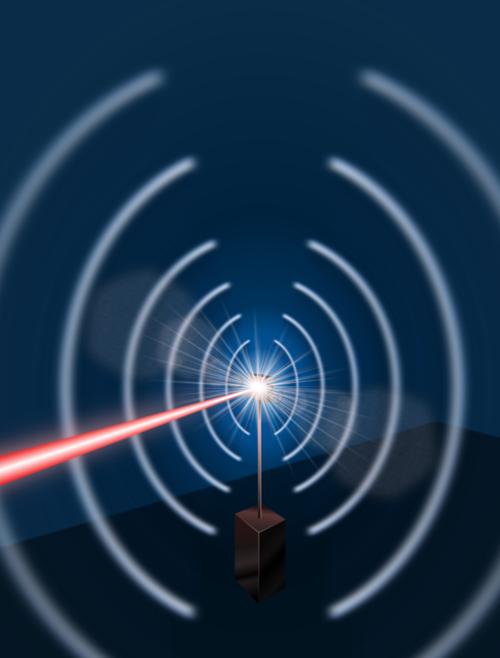Generation of electromagnetic waves was first demonstrated by Heinrich Hertz in 1887 and since then has become a leading subject of research, with an enormous range of applications covering radio communications, electronics, computing, radar technology and multi-wavelength astronomy. The accessible spectrum of electromagnetic emissions continuously extends toward shorter wavelengths from radio waves to microwaves, to optical and X-rays, challenging now the gamma-ray domain. It is also widely recognized that strong electromagnetic waves could be dangerous for health and electronics. Methods of detection of electromagnetic waves and mitigation of their undesirable effects are also in full development.
This paper provides an up-to-date review of the problems related to the generation, detection and mitigation of strong electromagnetic pulses (EMPs) created in the interaction of high-power, high-energy laser pulses with different types of solid targets. It addresses the particular problem of microwaves generated during the interaction, in the domain extending from radiofrequencies (MHz) to terahertz. This work collects the results from many research groups involved in this topic and includes new experimental data obtained independently at several international laboratories. The paper was published on High Power Laser Science and Engineering, Vol. 8, Issue 2, 2020 (Fabrizio Consoli, Vladimir T. Tikhonchuk, Matthieu Bardon, et al. Laser produced electromagnetic pulses: generation, detection and mitigation[J]. High Power Laser Science and Engineering, 2020, 8(2): 02000e22).
These electromagnetic pulses are regularly detected in laser–target interactions with laser pulses from the femtosecond to the nanosecond range. They are recognized as a threat to electronics and computers and have stimulated the development of various protective measures. However, this situation has significantly evolved since the invention of chirped pulse amplification (CPA) in lasers and the rapid development of powerful sub-picosecond (sub-ps) laser systems. Paradoxically, the interaction of sub-ps laser pulses with solid targets generates much stronger EMPs in the GHz domain than for nanosecond pulses of comparable energy. This fact has been reported in several publications during the past fifteen years, but an understanding of the underlying physics has been attained only recently.

Generation of laser produced electromagnetic pulses in the radiofrequency-microwave range.
The main source of strong GHz emissions in most interactions has been identified as the return current flowing through the support structure to the target, charged by the intense laser–target interaction. Controlling the geometric and electrical characteristics of the target support has therefore become the major EMP mitigation approach. The understanding of the physics of EMP generation has substantially advanced very recently, and other mechanisms of EMP generation have been identified. Among the related main research topics, we mention: the excitation of chamber resonant modes; the characterization of secondary EMP sources; the scattered radiation.
More accurate and efficient detection methods have been developed and used to deliver improved experimental data. At the same time, construction of a new generation of laser systems with pulsed powers exceeding the petawatt level is opening the possibility of conducting experiments with high repetition rates, creating the need for more reliable and efficient EMP protection and mitigation techniques.
A full comprehension of the physics of EMP generation and the mechanisms of their operation will enable the creation of temporally and spatially controlled electromagnetic fields of high intensity and wide distribution. This would lead to the new and significant employment of laser–plasma interactions for powerful and versatile radiofrequency–microwave sources, which will be of direct interest to particle-acceleration schemes, for which this is indeed of primary importance, as well as to a multidisciplinary range of applications: biological and medical studies of strong microwave interactions with cells; medical engineering; space communication; plasma heating; material and device characterization; EMP-radiation hardening of components; and electromagnetic compatibility studies. Understanding and controlling the sources of EMP radiation is also important for personnel protection.
This review paper summarizes the recent knowledge and experience gained by scientists working with high-power laser systems in many laboratories worldwide. It gives an overview of the
• theoretical understanding of the processes of electric charge accumulation on the target, return current formation and electromagnetic emission;
• advancements in diagnostic techniques for the detection of EMPs, with experimental results obtained on different high power laser facilities and related interpretation;
• techniques of mitigation of EMP effects, with experience accumulated on several high-power laser facilities;
• measured EMP levels on different laser facilities and possible applications of EMPs.


